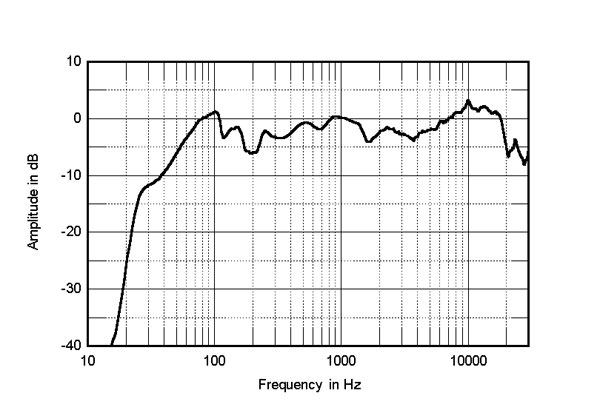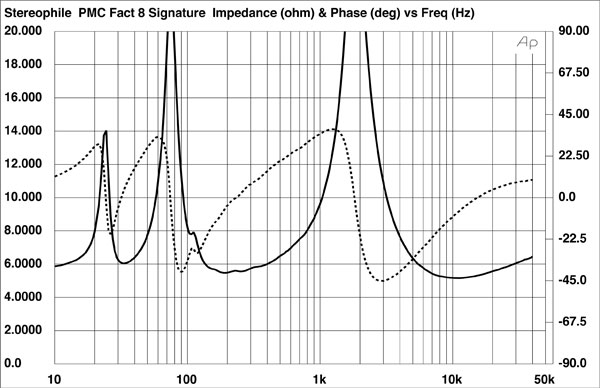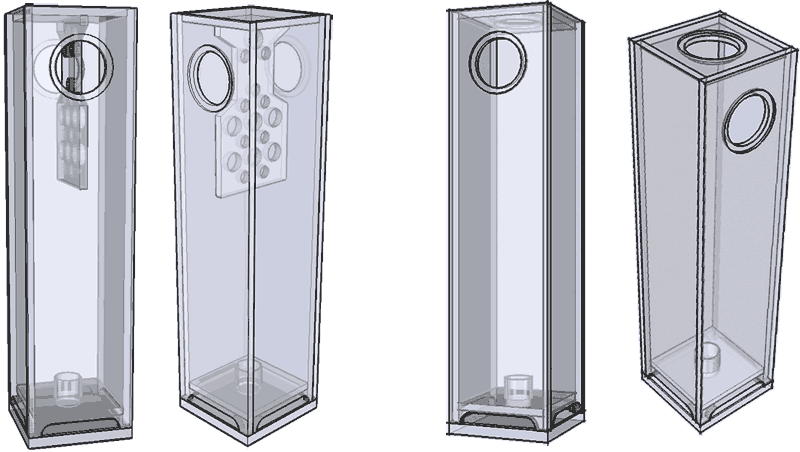Please note that the Stirling 3 is not a transmission line design.
Given the vent (retricted terminus) at the bottom and woofers with a Zd at the tweeter. Take the last, the cross-section, the height, and thw driver’s T/S and the size of the vent can be determined. The variable height allows for some measure of further adjusting the mass-loading to better suit the room.
It is definitely a TL, specifically an ML-TL, the physics dicate that.
Given the lack of T/S, a removable bottom and a variety of vents, cut & try. You can listen ot you can measure.
dave
Edit: I was referring to the 'classic' transmission line design.
However, we do have a downward firing port whose dimensions we can play with.
However, we do have a downward firing port whose dimensions we can play with.
Indeed the term TL has warped since the release of decent TL modelers.
Even as a Classic TL it is underwhelming. Not enuff terminus LP IMO.
fact.8. You can see teh expected LF lumpiness from that here:

Not as easy to pick out in the impedance but you can see 4 of the unwanted harmonics.

Stereophile measurements.
dave
Even as a Classic TL it is underwhelming. Not enuff terminus LP IMO.
fact.8. You can see teh expected LF lumpiness from that here:

Not as easy to pick out in the impedance but you can see 4 of the unwanted harmonics.

Stereophile measurements.
dave
Here a classic TL in the style of Bailey, Radford, and IMF. For the SEAS A26.

Large pre chamber, and a bit of restricted terminus, lots of damping.
dave

Large pre chamber, and a bit of restricted terminus, lots of damping.
dave
An example of an end-loaded (Zd close to zero) ML-TL withj vent out the bottom.
https://www.diyaudio.com/community/threads/microtower-bipolar-ml-tl-for-chr-70-or-el70.148901/

The document for these has vent sizes for a range of drivers, some buiders did the removable bottom so they could try different drivers or be ready for updates — a number of people converted their EL70 Castkles to Pluvia &HD for a step up in performance. You will have to experimen with different vents for your specific drivers.
dave
https://www.diyaudio.com/community/threads/microtower-bipolar-ml-tl-for-chr-70-or-el70.148901/

The document for these has vent sizes for a range of drivers, some buiders did the removable bottom so they could try different drivers or be ready for updates — a number of people converted their EL70 Castkles to Pluvia &HD for a step up in performance. You will have to experimen with different vents for your specific drivers.
dave
Thanks for the design comparisons, Dave, very instructive. 👍
I admit to my knowledge of ML-TL (Mass Loaded Transmission Line) speakers having been sketchy - but that's no longer the case!
I admit to my knowledge of ML-TL (Mass Loaded Transmission Line) speakers having been sketchy - but that's no longer the case!
Here we go peeps , this is where im at now , what do you think ?

Last edited by a moderator:
what do you think ?
The finish of the enclosure looks good.
Is your experimentation with tube length etc. over yet?
Thank you
Not even started yet .
I'm hesitating because I need to know the diameter of the port first , so I do not have to keep removing the bottom and re cutting it .
Still hoping someone will save the day for me Isuppose
Not even started yet .
I'm hesitating because I need to know the diameter of the port first , so I do not have to keep removing the bottom and re cutting it .
Still hoping someone will save the day for me Isuppose
The speaker has 5" bass drivers.
The recommended minimum port size for this driver size is 2" (50 mm) in diameter.
Choose a plastic pipe with an internal diameter close to 2" and cut it up into various lengths, e.g., 50 mm; 100 mm; 200 mm etc.
Cut a hole in the base plate to suit the outside diameter of the pipe to ensure a snug fit of the pipe in the base plate.
Now experiment away until you find the length of pipe that gives the most pleasing bass response.
You would experiment with just one of the speakers of course till you find the optimum.
The recommended minimum port size for this driver size is 2" (50 mm) in diameter.
Choose a plastic pipe with an internal diameter close to 2" and cut it up into various lengths, e.g., 50 mm; 100 mm; 200 mm etc.
Cut a hole in the base plate to suit the outside diameter of the pipe to ensure a snug fit of the pipe in the base plate.
Now experiment away until you find the length of pipe that gives the most pleasing bass response.
You would experiment with just one of the speakers of course till you find the optimum.
Ahhh I see , you say minimum , what would be the maximum ? and would a larger diameter make any difference ?
Thanks Dave , but , im a joiner , could you dumb it down a bit for me
It is simple math. To use a larger diameter vent the length needs to increase.
If you have one vent, it allows you to figure out what size a different diameter vent should be.
It won’t help choose your vent but might help with comparing them.
dave
If you have one vent, it allows you to figure out what size a different diameter vent should be.
It won’t help choose your vent but might help with comparing them.
dave
Ahhh I see , you say minimum , what would be the maximum ? and would a larger diameter make any difference ?
As Dave has said, as the diameter goes up the length of the port goes up. So you are limited by what length of straight pipe you can fit vertically in the enclosure (unless you want to start folding the pipe using elbows).
For that reason, I say start experimenting with the minimum suitable diameter.
Larger diameter means less air turbulence, so less port noise at high volumes - but too large can result in too long a pipe.
OK , I have been recalculating and recalculating and something somewhere is wrong .
With a box volume of 0.821 ft3 , a port diameter of 2" and a tuning frequency of 45hz I am getting a port length of 1.101.3 mm ??????????
I am not asking for the answer just some guidance as to where I am going wrong
With a box volume of 0.821 ft3 , a port diameter of 2" and a tuning frequency of 45hz I am getting a port length of 1.101.3 mm ??????????
I am not asking for the answer just some guidance as to where I am going wrong
What are you using to calculated the vent? You can’t get away with a reflex modeler, the vent will likely be too short.
And what/where did you get T/S for the bass drivers?
dave
And what/where did you get T/S for the bass drivers?
dave
I used the minimum diameter port recommended for a 5" driver , 2"
The number of ports , 1
The internal volume of the box , 0.821 ft3
and the tuning frequency of the box which is 45hz
I do not know what T/S is
The number of ports , 1
The internal volume of the box , 0.821 ft3
and the tuning frequency of the box which is 45hz
I do not know what T/S is
- Home
- Loudspeakers
- Multi-Way
- Castle Stirling 3 Speaker Refurb